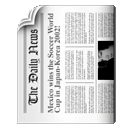Поиск :
Личный кабинет :
Электронный каталог: Samoylova, N. Yu. - Effect of Drying on the Polyaniline-Coated Prussian White Cathode Material for Sodium-Ion Batteries
Samoylova, N. Yu. - Effect of Drying on the Polyaniline-Coated Prussian White Cathode Material for Sodium-Ion Batteries

Статья
Автор: Samoylova, N. Yu.
Journal of Physics and Chemistry of Solids: Effect of Drying on the Polyaniline-Coated Prussian White Cathode Material for Sodium-Ion Batteries
б.г.
ISBN отсутствует
Автор: Samoylova, N. Yu.
Journal of Physics and Chemistry of Solids: Effect of Drying on the Polyaniline-Coated Prussian White Cathode Material for Sodium-Ion Batteries
б.г.
ISBN отсутствует
Статья
Samoylova, N.Yu.
Effect of Drying on the Polyaniline-Coated Prussian White Cathode Material for Sodium-Ion Batteries / N.Yu.Samoylova, R.N.Vasin, S.V.Sumnikov, O.Yu.Ponomareva, M.E.Donets, E.A.Korneeva, E.V.Andreev // Journal of Physics and Chemistry of Solids. – 2025. – Vol. 204. – P. 112762. – URL: https://doi.org/10.1016/j.jpcs.2025.112762. – Bibliogr.: 39.
Sodium iron hexacyanoferrate Prussian white (PW) is a commercially available cathode material for sodium-ion batteries. However, the structure of the hexacyanoferrate contains water, and the electrochemical performance of the PW strongly depends on the dehydration level of the material. Moreover, PW electrodes show a rapid capacity decrease, which is argued to be related with interfacial chemical reactions. A protective coating may be applied to suppress or completely prevent such reactions. In this work, we coated μm-sized PW particles with polyaniline (PANI) shell and investigated the effect of drying at increased temperature on PW@PANI material. The PW@PANI material exhibits a discharge capacity of 89.1 mAh g&sup(−1) at 85 mA g&sup(−1) with a capacity retention of 78.4 % over 500 cycles. PW@PANI electrode dried at 140 &sup(o)C demonstrates a stable capacity of up to ≈ 97 mAh g&sup(−1) during first 200 cycles at 85 mA g&sup(−1) , however, its capacity retention over 500 cycles is lower compared to the non-dried PW@PANI electrode. Drying PW@PANI electrodes at 180 &sup(o)C leads to a rapid capacity decrease. For the first time, a comparative study of the PW powder soaked with HCl acid solution used in the synthesis of PW@PANI has been performed and its stable long-term electrochemical performance has been observed.
Спец.(статьи,препринты) = С 45 - Физическая химия
Спец.(статьи,препринты) = С 332.8 - Синхротронное излучение. Лазеры на свободных электронах. Получение и использование рентгеновских лучей
ОИЯИ = ОИЯИ (JINR)2025
Бюллетени = 43/025
Samoylova, N.Yu.
Effect of Drying on the Polyaniline-Coated Prussian White Cathode Material for Sodium-Ion Batteries / N.Yu.Samoylova, R.N.Vasin, S.V.Sumnikov, O.Yu.Ponomareva, M.E.Donets, E.A.Korneeva, E.V.Andreev // Journal of Physics and Chemistry of Solids. – 2025. – Vol. 204. – P. 112762. – URL: https://doi.org/10.1016/j.jpcs.2025.112762. – Bibliogr.: 39.
Sodium iron hexacyanoferrate Prussian white (PW) is a commercially available cathode material for sodium-ion batteries. However, the structure of the hexacyanoferrate contains water, and the electrochemical performance of the PW strongly depends on the dehydration level of the material. Moreover, PW electrodes show a rapid capacity decrease, which is argued to be related with interfacial chemical reactions. A protective coating may be applied to suppress or completely prevent such reactions. In this work, we coated μm-sized PW particles with polyaniline (PANI) shell and investigated the effect of drying at increased temperature on PW@PANI material. The PW@PANI material exhibits a discharge capacity of 89.1 mAh g&sup(−1) at 85 mA g&sup(−1) with a capacity retention of 78.4 % over 500 cycles. PW@PANI electrode dried at 140 &sup(o)C demonstrates a stable capacity of up to ≈ 97 mAh g&sup(−1) during first 200 cycles at 85 mA g&sup(−1) , however, its capacity retention over 500 cycles is lower compared to the non-dried PW@PANI electrode. Drying PW@PANI electrodes at 180 &sup(o)C leads to a rapid capacity decrease. For the first time, a comparative study of the PW powder soaked with HCl acid solution used in the synthesis of PW@PANI has been performed and its stable long-term electrochemical performance has been observed.
Спец.(статьи,препринты) = С 45 - Физическая химия
Спец.(статьи,препринты) = С 332.8 - Синхротронное излучение. Лазеры на свободных электронах. Получение и использование рентгеновских лучей
ОИЯИ = ОИЯИ (JINR)2025
Бюллетени = 43/025
 На полку
На полку 
